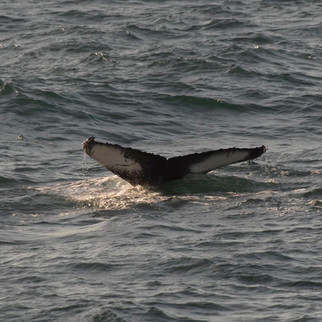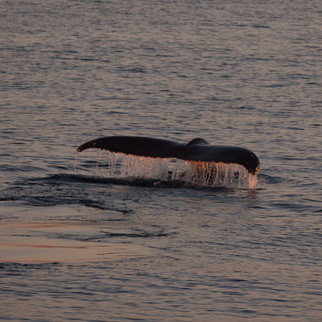WHALES: PREPARING FOR WINTER
- Elding's research team
- Oct 6, 2019
- 2 min read
Updated: Oct 7, 2019
"It seems like the humpback whales are slowly beginning their migration into the more tropical waters! In the past week, we have encountered 3 new humpback whales in our bay that were feeding on all occasions when we encountered them. They are topping up their already thick layers of blubber, which is a very lipid rich type of fat, to live on while they migrate and also when they are in their feeding ground.
Humpback whales, like other baleen whales, are migratory. This means they have two places they live in during the year, a feeding ground and a mating ground. Iceland is a very important feeding ground for them and they spend most months of the year here to continuously feed. But when it comes to November/ December, the majority of them migrates to sub-tropical waters for mating and birthing. These warmer waters are called their "breeding ground". The incredible thing though is that once the baleen whales begin their travels, they often go on an extreme diet, stopping to eat almost completely once they leave their feeding grounds in and around Iceland.
This is where their layer of blubber becomes so important for them. While on the one hand it is an insulating layer in the colder waters of the feeding ground, it is even more important as an energy storage. The baleen whales are able to live off of the energy, the fats, stored in their blubber while they migrate and also while they are in their breeding ground. The calves, the offspring of whales, acquire this blubber rather quickly after birth as well due to the composition of the mother milk they are fed. It is very, very rich in proteins. This way they gain enough strength to travel alongside their mother from the breeding ground to the feeding ground, a distance that can be as much as 12.000 km.!

So now is the time when humpback whales as well as minke whales are just stacking up on their last blubber layers and getting ready for their migration. Luckily for us, there are always some individuals that stay over winter though. These are typically whales that are still too young to reproduce, are too old, are simply taking a year off or ones that did not acquire a thick enough layer of blubber to sustain them for their entire migration. So no matter what time of the year, there is always a chance!"
Article by research coordinator Sabrina Voswinkel







Comments